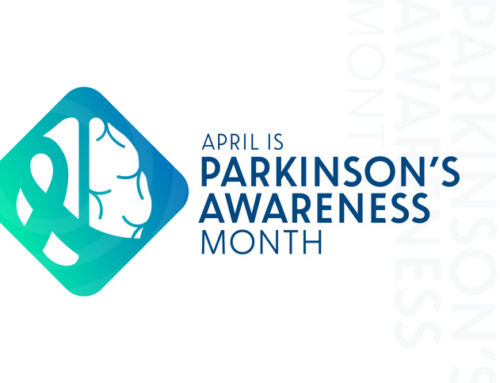April is Parkinson’s Awareness Month. Although there is no cure for the disease, research and treatments are being conducted that are showing promise. However, if you or a loved one is suffering, the answers can’t come soon enough. FirstLantic wants to make sure that you know the cutting-edge research underway and actions that you can take to help impact the future.
What is Parkinson’s Disease?
Parkinson’s happens when cells in the brain that produce dopamine stop working or die. Dopamine is a neurotransmitter, a chemical that sends messages between nerve cells or between nerve cells and muscle cells to help the body function. Dopamine plays many roles in the body and affects physical and mental processes. Parkinson’s is progressive, and symptoms include tremors, muscular rigidity, and slow, imprecise movement.
Treatments
- A non-invasive ultrasound treatment for Parkinson’s disease was tested in a trial led by the University of Maryland School of Medicineand is now broadly available at their Medical Center. The device, called Exablate Neuro, was approved late last year by the U.S. Food and Drug Administration to treat advanced Parkinson’s disease on one side of the brain. Focused ultrasound is an incision-less procedure that does not require anesthesia or an in-patient stay in the hospital. Soon after treatment begins, many patients experience relief from severe symptoms such as tremors, rigidity, and side effects from medications that cause involuntary, erratic movements called “dyskinesia.”
- Researchers at Rush University Medical Center have shown that two lab-developed and nasally delivered peptides helped slow the spread of alpha-synuclein. This protein occurs in abnormal protein deposits called Lewy bodies in the brain, hallmarks of Parkinson’s disease. While still in clinical trials, these latest research results are showing promise. The lab-developed peptides tested in the study are known as TLR2-interacting domain of Myd88 (TIDM) and NEMO-binding domain (NBD) and, when delivered through the nose, were found to slow inflammation in the brain and stop the spread of alpha-synuclein.
- Researchers have recently solved a mystery about a critical protein linked to Parkinson’s that could help fast-track treatments. The research identifies the molecular detail of the protein PINK1 in the cell, how it’s activated, and where it’s responsible for initiating the removal and replacement of damaged mitochondria. When the protein is not working correctly, it can starve brain cells of energy, causing them to malfunction and — in the long term — die, as happens to dopamine-producing cells in Parkinson’s disease. The discovery is the culmination of a project spanning eight years. It provides the first detailed blueprint for the discovery and development of therapeutic agents that could help slow or even completely stop the progression of Parkinson’s disease.
- Researchers from Carnegie Mellon University have found a way to make deep brain stimulation (DBS) more precise, resulting in therapeutic effects that outlast what is currently available. DBS allows researchers and doctors to use thin electrodes implanted in the brain to send electrical signals to that part of the brain that controls movement. While it’s a proven way to help prevent unwanted movement in the body, patients must receive continuous electrical stimulation to get relief from their symptoms. This therapy could change that. In the new protocol, the researchers target specific neuronal subpopulations with short bursts of electrical stimulation. Although studies are ongoing, these new findings could help design future technology to enable better patient outcomes.
- Stem cell therapy may be able to replace and repair damaged dopamine-producing nerve cells within the brain. According to Medical News Today, “Currently, the most common treatment uses the drug levodopa to stimulate dopamine production in specific neurons associated with motor skills. However, levodopa has a wide array of side effects, and in the long term, the benefits of dopamine-regulating drugs are limited. At DVC Stem, they are showing promising results with Cord Tissue-Derived Mesenchymal Stem Cells making treatment more effective than Bone Marrow-Derived treatments used in the early 2010s. The development of these advanced cellular therapies makes it possible to combat the progression of the disease without the resulting motor complications. Mesenchymal stem cells have self-renewal, immunomodulatory, anti-inflammatory, signaling, and differentiation properties and are being widely used to treat various diseases.
These stem cells have now been shown to be capable of differentiating among dopamine neurons that provide benefits for Parkinson’s disease.
What Can You Do to Help?
According to the Parkinson’s Foundation, there are three primary ways that we all can do our part.
- Participation in research enables scientists to discover ways to improve treatment and eventually find a cure. You can find out more about how to participate here.
- Spread the word about Parkinson’s Disease about what the disease is and the types of research and treatment options available by talking to family and friends and promoting it on social media. This PDF is available to download with important information.
- Research and clinical trials are expensive, and every dollar you donate brings us one step closer to finding answers for those suffering. You can find out how to donate here.
This month, do what you can to create a future where no one has to live with Parkinson’s Disease.
and is now broadly available at their Medical Center. The device, called Exablate Neuro, was approved late last year by the U.S. Food and Drug Administration to treat advanced Parkinson’s disease on one side of the brain. Focused ultrasound is an incision-less procedure that does not require anesthesia or an in-patient stay in the hospital. Soon after treatment begins, many patients experience relief from severe symptoms such as tremors, rigidity, and side effects from medications that cause involuntary, erratic movements called “dyskinesia.”
- Researchers at Rush University Medical Center have shown that two lab-developed and nasally delivered peptides helped slow the spread of alpha-synuclein. This protein occurs in abnormal protein deposits called Lewy bodies in the brain, hallmarks of Parkinson’s disease. While still in clinical trials, these latest research results are showing promise. The lab-developed peptides tested in the study are known as TLR2-interacting domain of Myd88 (TIDM) and NEMO-binding domain (NBD) and, when delivered through the nose, were found to slow inflammation in the brain and stop the spread of alpha-synuclein.
- Researchers have recently solved a mystery about a critical protein linked to Parkinson’s that could help fast-track treatments. The research identifies the molecular detail of the protein PINK1 in the cell, how it’s activated, and where it’s responsible for initiating the removal and replacement of damaged mitochondria. When the protein is not working correctly, it can starve brain cells of energy, causing them to malfunction and — in the long term — die, as happens to dopamine-producing cells in Parkinson’s disease. The discovery is the culmination of a project spanning eight years. It provides the first detailed blueprint for the discovery and development of therapeutic agents that could help slow or even completely stop the progression of Parkinson’s disease.
- Researchers from Carnegie Mellon University have found a way to make deep brain stimulation (DBS) more precise, resulting in therapeutic effects that outlast what is currently available. DBS allows researchers and doctors to use thin electrodes implanted in the brain to send electrical signals to that part of the brain that controls movement. While it’s a proven way to help prevent unwanted movement in the body, patients must receive continuous electrical stimulation to get relief from their symptoms. This therapy could change that. In the new protocol, the researchers target specific neuronal subpopulations with short bursts of electrical stimulation. Although studies are ongoing, these new findings could help design future technology to enable better patient outcomes.
- Stem cell therapy may be able to replace and repair damaged dopamine-producing nerve cells within the brain. According to Medical News Today, “Currently, the most common treatment uses the drug levodopa to stimulate dopamine production in specific neurons associated with motor skills. However, levodopa has a wide array of side effects, and in the long term, the benefits of dopamine-regulating drugs are limited. At DVC Stem, they are showing promising results with Cord Tissue-Derived Mesenchymal Stem Cells making treatment more effective than Bone Marrow-Derived treatments used in the early 2010s. The development of these advanced cellular therapies makes it possible to combat the progression of the disease without the resulting motor complications. Mesenchymal stem cells have self-renewal, immunomodulatory, anti-inflammatory, signaling, and differentiation properties and are being widely used to treat various diseases.
These stem cells have now been shown to be capable of differentiating among dopamine neurons that provide benefits for Parkinson’s disease.
What Can You Do to Help?
According to the Parkinson’s Foundation, there are three primary ways that we all can do our part.
- Participation in research enables scientists to discover ways to improve treatment and eventually find a cure. You can find out more about how to participate here.
- Spread the word about Parkinson’s Disease about what the disease is and the types of research and treatment options available by talking to family and friends and promoting it on social media. This PDF is available to download with important information.
- Research and clinical trials are expensive, and every dollar you donate brings us one step closer to finding answers for those suffering. You can find out how to donate here.
This month, do what you can to create a future where no one has to live with Parkinson’s Disease.
To find out more about FirstLantic Home Healthcare, click here.
To read more FirstLantic blogs, click here.
 AVAILABLE 24 HOURS A DAY/7 DAYS A WEEK
AVAILABLE 24 HOURS A DAY/7 DAYS A WEEK Careers
Careers







